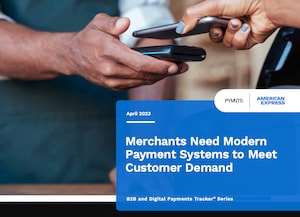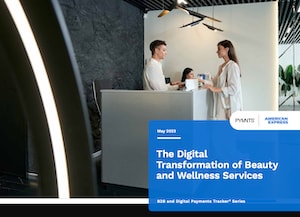May 25, 2023
Better Together: Sales and Marketing Automation

What is sales-marketing automation?
Sales-marketing automation is the combination of sales automation tools and marketing automation tools in a single strategy for finding, engaging, and assisting in the conversion of customers. This blend helps teams to increase their efficiency and engage with customers across the board.
What is sales automation?
Sales automation is the process of using software to automate sales activities. Use it to help identify qualified leads and personalize outreach efforts. Additionally, sales automation tools can also help streamline processes like invoicing and processing payments.
What is marketing automation?
Marketing automation software helps businesses plan and run marketing campaigns. It can help with activities throughout the entire buyer’s journey — from initial contact to a post-purchase follow-up via email.
How do sales and marketing automation work together?
The basic premise of automation tools is to help provide businesses of any size with scalability and cost savings. These tools can help reduce the costs associated with manual processes, free up resources for higher-level tasks, and allow companies to collect and organize data in valuable ways.
But the combination of sales and marketing automation is particularly powerful. When you can connect customer data across departments, you can save time and help to improve the customer experience.
For example, businesses may use marketing automation software to automate the lead nurturing process, delivering personalized content at various stages of the customer journey. Think how effective this content could be when combined with sales automation tools that store customer data and use it to help predict future behavior.
The combination of sales and marketing automation enables companies to collect detailed insights and act on them. Even better, businesses can program this work to occur automatically for maximum efficiency with minimum additional effort.
How marketing automation benefits sales
Marketing automation can provide a range of benefits to sales teams. With automated campaigns, businesses can target potential customers with personalized messages at specific times. This could increase the chances of converting leads into customers. Companies can also segment their leads into different categories based on demographics or stated interests, making it possible for sales teams to target prospects with relevant offers and information.
In fact, with email marketing automation, you can nurture leads throughout the customer journey. You can send automated emails to keep your customers informed about new products or services, as well as discounts and promotions. This helps build relationships with potential customers and helps keep them engaged with your brand. As consumers move through the sales funnel, you can also automate follow-ups, such as requests for reviews or promoting related services.
Marketing automation benefits also include the ability to track and forecast audience behavior, giving sales teams data about the strategies that may resonate with a given lead.
How sales automation benefits marketing
Sales automation tools provide businesses with their report cards. By collecting data on orders and payments, you can see how campaigns perform and what the return on investment (ROI) is for a given channel or campaign. Using this knowledge, you can optimize your efforts moving forward.
Your sales tools could also track customer purchases over time. This would help you understand overarching sales trends and individual preferences. Additionally, they can create tailored content that resonates with a particular customer or takes advantage of seasonal opportunities.
Popular areas for sales-marketing automation
The most common areas to incorporate marketing automation include email, social media, and paid advertisements. In fact, 55% of marketers used email automation in 2022 — a considerable increase over the 40% who used it in 2021.
Applications for marketing automation include solutions for:
- Email marketing. Ensure your emails are sent to the right people at the right time and with the most relevant content. Craft personalized emails, schedule campaigns, segment audiences, track performance, etc.
- Social media management. Optimize your social media presence and keep it up-to-date. You can find tools to manage your social media accounts, schedule posts, engage with followers, monitor trends, and analyze social media data.
- Paid ads. You can create, manage, and monitor campaigns across multiple platforms, including social media paid advertising. Note that many paid ad platforms offer automation tools to help you optimize campaigns.
- Landing pages. Build and deploy custom landing pages, giving customers helpful information and offers.
- Campaign tracking. Identify patterns in user behavior across platforms. What drives engagement and conversion?
- Content management. Manage and store digital content. Content tools streamline the creation process and enable collaboration.
- Live chat. Provide customer service with quick responses to inquiries and enable smoother conversations. You can also capture more information about customer interactions and personalize follow-ups.
On the sales side, you can automate:
- Customer relationship management (CRM). CRM software allows businesses to store and analyze customer data, keeping track of customer interactions in a central location. Track sales opportunities, manage deals, and send follow-up emails and appointment reminders.
- Lead generation. Lead generation tools collect data from various sources to help identify potential customers and shape campaigns.
- Documentation, contracts, and deliverables. There are multiple tools that help streamline data entry and customization. Create branded proposals, quotes, and invoices to send consumers. You can also generate and share internal documents, helping to keep everyone on the same page — literally.
In addition, there are general productivity apps that include automation features. These can help you to streamline product management and workflows.
Where to start with marketing and sales automation
Once you understand the different types of automation available, it’s time to decide which tools are best for your business. What are your business’s specific needs and priorities? What’s the size of your brand? What are your plans for the future?
One available option is to hire a marketing automation agency. These businesses can create customized plans that make use of multiple tools.
Alternatively, you can assemble your own suite of sales and marketing software solutions. Consider your options, weighing different factors against one another, including:
- Price
- Ease of use
- Customer service
- Customization options
- Integration capabilities
- Data analytics
- Onboarding speed
- Data consolidation capabilities
Remember: you should always be thinking about how you can use tools in combination with each other. For example, if you’re using a CRM system for sales automation, think about how it could be integrated with an email marketing platform for automated follow-up emails or with a live chat application for automated responses to customer inquiries.
Finally, make sure you have a plan in place for tracking results and measuring success. Ensure your sales marketing automation earns its keep. To this end, consider basing — and adjusting — your strategy on data-driven insights rather than guesswork.
Make it so that everybody wins — automatically
By integrating customer touchpoints, you can track leads from the beginning of their journey until they become customers. Increase your automation and personalization to help close deals and retain customers.
As you start connecting your sales and marketing automation think about what you want to happen every time a new lead joins your list. And about what should happen every time a customer orders a particular product. I bet you can find a corresponding automation that you can implement.








